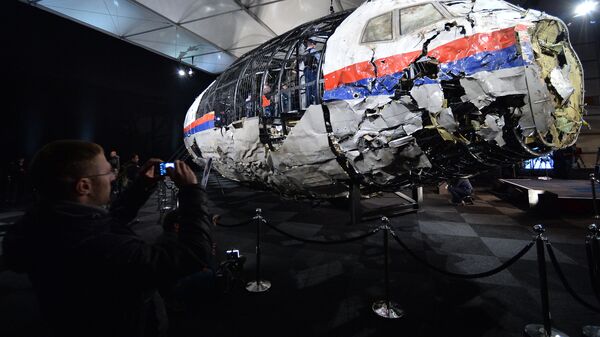MOSCOW (Sputnik) — Dutch investigators probing the MH17 crash in Ukraine should take into account research data provided by Russians that challenges some conclusions made in their last year’s report, experts told Sputnik on Thursday.
In July 2014, the Malaysia Airlines Boeing 777 crashed in eastern Ukraine while en route to Kuala Lumpur from Amsterdam, killing all 298 people on board, most of them Dutch citizens. The Dutch Safety Board (DSB) has been in charge of an international investigation.
Russian flight safety watchdog Rosaviatsia released a document on Thursday, compelling DSB’s October report over the type of a missile that allegedly downed the Malaysian plane and the positioning of the missile launcher.
“In the interests of transparency this latest research must also be fully evaluated by the Dutch team and their advisors, and if needed an additional investigation and report needs to be,” said Julian Bray, UK’s leading aviation security and operations expert.
He emphasized the difficulty of obtaining accurate data from a war zone, which is eastern Ukraine, and commended the effort of Dutch investigators, but said more solid evidence would not hurt.
“I call on all sides to open their data banks and release the metadata computer information and images that will finally support and provide a definitive answer to the fate of MH17,” he said.
Frederic Engdahl, a geopolitical analyst and strategic risk consultant, cited an interview by a Spanish professional controller working at the Kiev air traffic control facility who said it had been stormed at the time of the MH17 air disaster.
The man validated the evidence given in the Thursday statement by Rosaviatsia deputy head Oleg Storchevoy. He disappeared shortly after talking in public, Engdahl said, adding that Ukrainian authorities were “criminally negligent at the least.”
Mark Rosenker, the former head of the National Transportation Safety Board, an independent US agency investigating civil transportation accidents, said that Dutch investigators appeared to be satisfied with their report as it was.
“It appears that evidences were solid enough that the Dutch are very comfortable with their determination,” Rosenker said, adding he believed the DSB’s conclusions on the probable cause of the plane crash were “right on target.”
In October, DSB published a final report on its investigation, in which it found that MH17 crashed as a result of being hit by a 9N314M-model warhead, carried on the 9M38-series of surface-to-air Buk missiles. It was fired from anywhere within a 123-square-mile area of eastern Ukraine, the report said, without specifying who was responsible for the launch.




